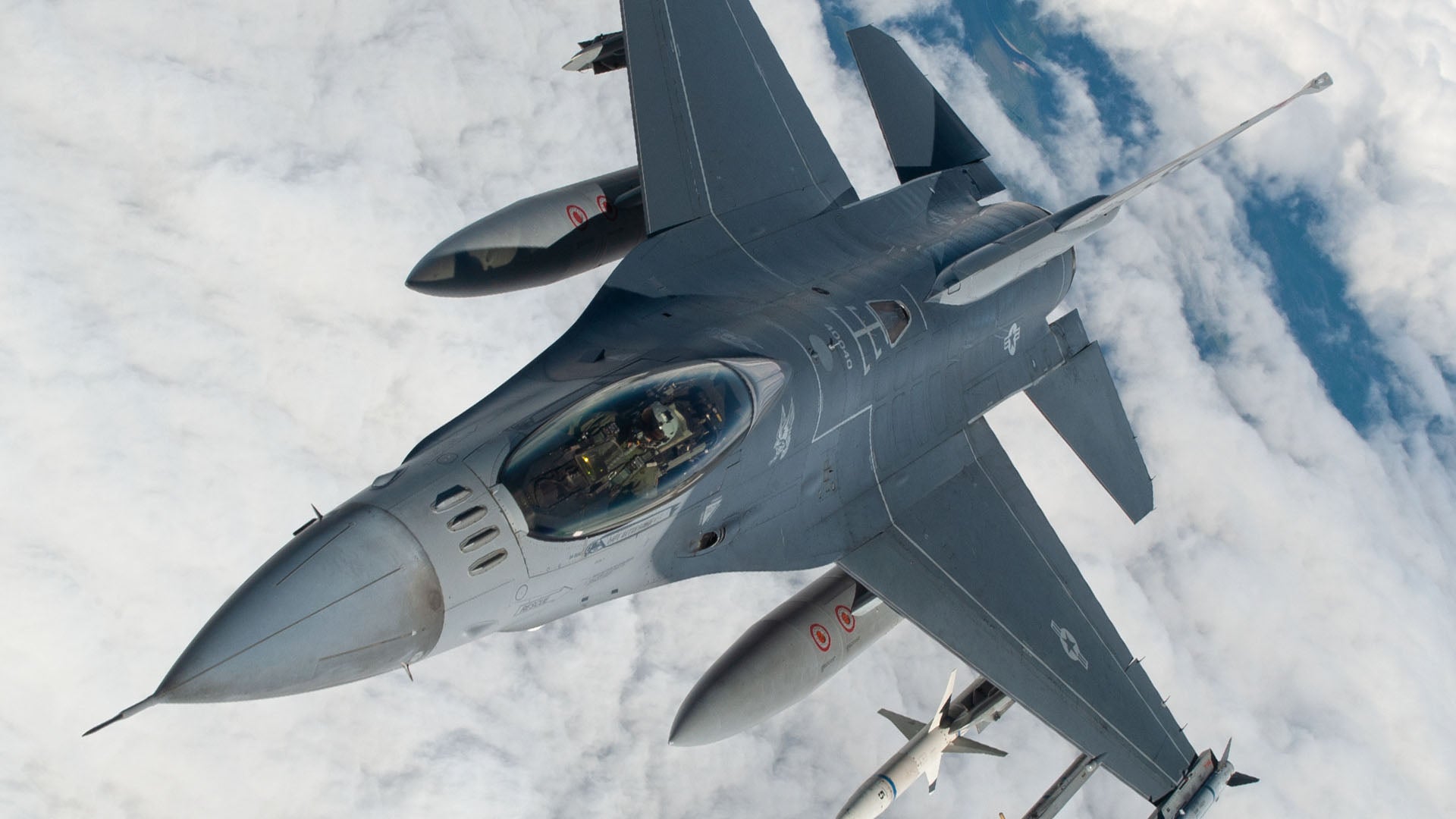The U.S. Air Force is deeply engaged in advanced testing that will help it to exploit the full capabilities of the F-16’s new Northrop Grumman AN/APG-83 Active Electronically Scanned Array, or AESA, radar. It’s part of uncovering the full potential of the radar, and the F-16 for that matter, as it joins more squadrons, firstly in the Air National Guard, followed by active-duty units.
AESA radars offer a massive leap in capabilities over their mechanically scanned array predecessors, both in terms of range, fidelity, fast-scanning ability, reliability, and resistance to being jammed or being fooled by enemy countermeasures, among other advantages. You can read more about AESA arrays in these past War Zone pieces for more background on the topic.
The Air Force recently highlighted the radar and the added capabilities it offers in a media release that detailed how the radar was tested on a first-of-its-kind combined mission with four suitably upgraded F-16s on July 2, 2020. By testing four AESA radars at the same time, the service also assessed whether the aircraft experienced interference and evaluated if the radars’ signals improved or degraded while operating together.
“Now that we have a number of these radars available, especially in operational test, we are going to work our way through all mission sets […] all the way through air-to-air, air-to-ground, Suppression of Enemy Air Defense, Close Air Support, and how we integrate it across all types of other aircraft too,” Air Force Major Joe “Hurt” Viegas told The War Zone. Viegas is the AESA program manager from the 59th Test and Evaluation Squadron (TES) at Nellis Air Force Base, Nevada. That unit is part of the 53rd Wing’s 53rd Test Management Group, which is headquartered at Eglin Air Force Base, Florida.
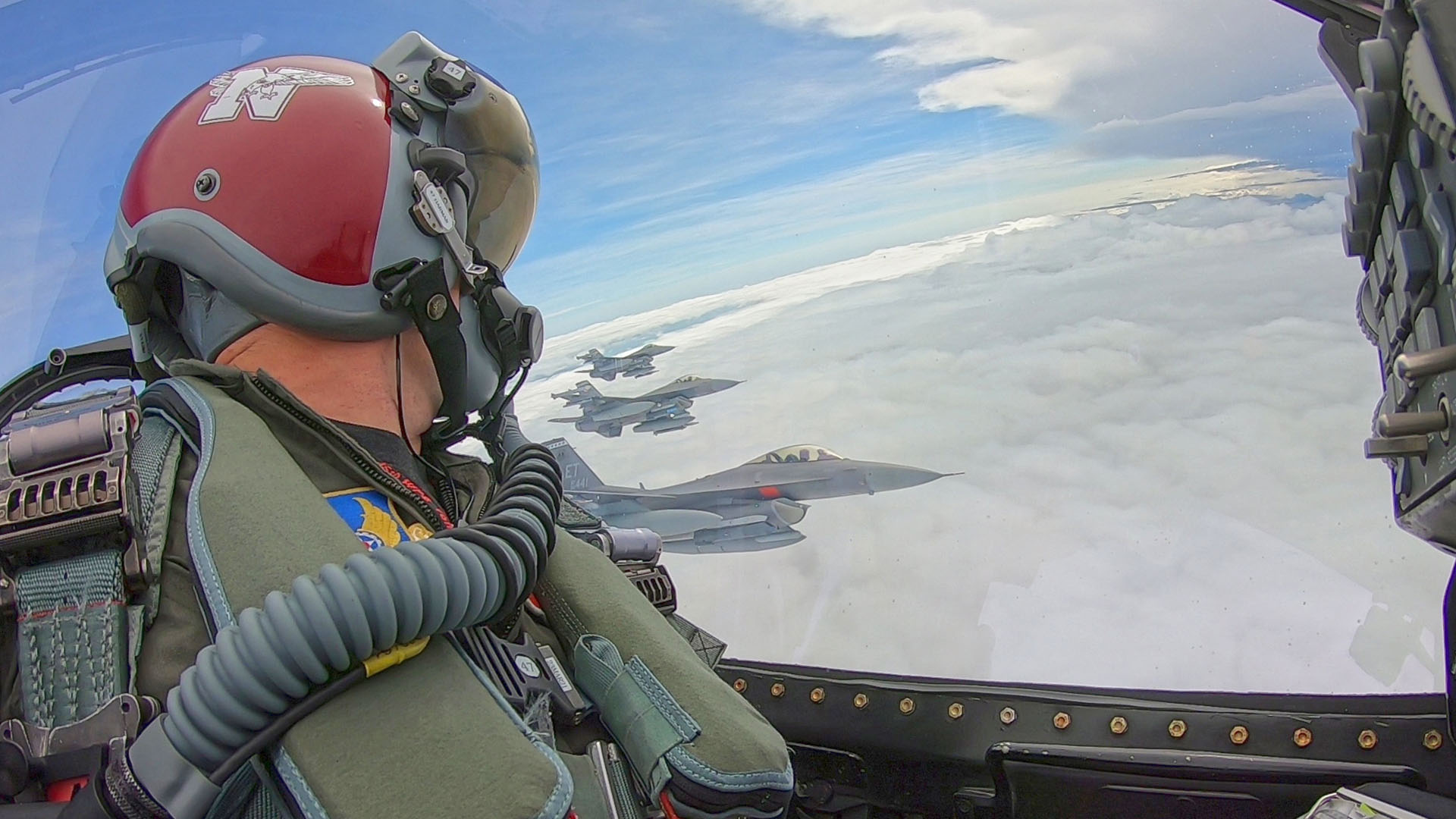
“What’s somewhat unique about the overall F-16 test enterprise is that the 53rd Wing and the Test and Evaluation Group have been really trying to streamline our efforts in terms of rapidly fielding capabilities,” Viegas added. “Though this is a fielded capability, talking to the APG-83 specifically, this is being [rolled-out] in incremental phases.”
Northrop Grumman developed the AN/APG-83, also known as the Scalable Agile Beam Radar (SABR), as a scalable and tailorable AESA based on its work with the F-22’s AN/APG-77 and the F-35’s AN/APG-81. It is ideally suited as a retrofit solution for the F-16’s mechanically-scanned AN/APG-66/68 radar and is also now available in new-build Vipers. Flight-testing of the radar on the F-16 first commenced at Edwards AFB, California, in November 2009, and Taiwan became the launch customer when it selected the radar for its F-16V upgrade. The radar is now a key part of that upgrade package and it will also be found on new-production F-16C/D Block 70/72 aircraft, which you can read more about here in this previous War Zone piece. SABR is also being assessed for possible USAF bomber upgrades.
Viegas says that the 53rd Wing is now tasked with “stressing” the AESA in a realistic and combat-representative environment, collectively using two Eglin test units, along with the 59th TES at Nellis and the Air National Guard Air Force Reserve Test Center (AATC) in Tucson, Arizona.
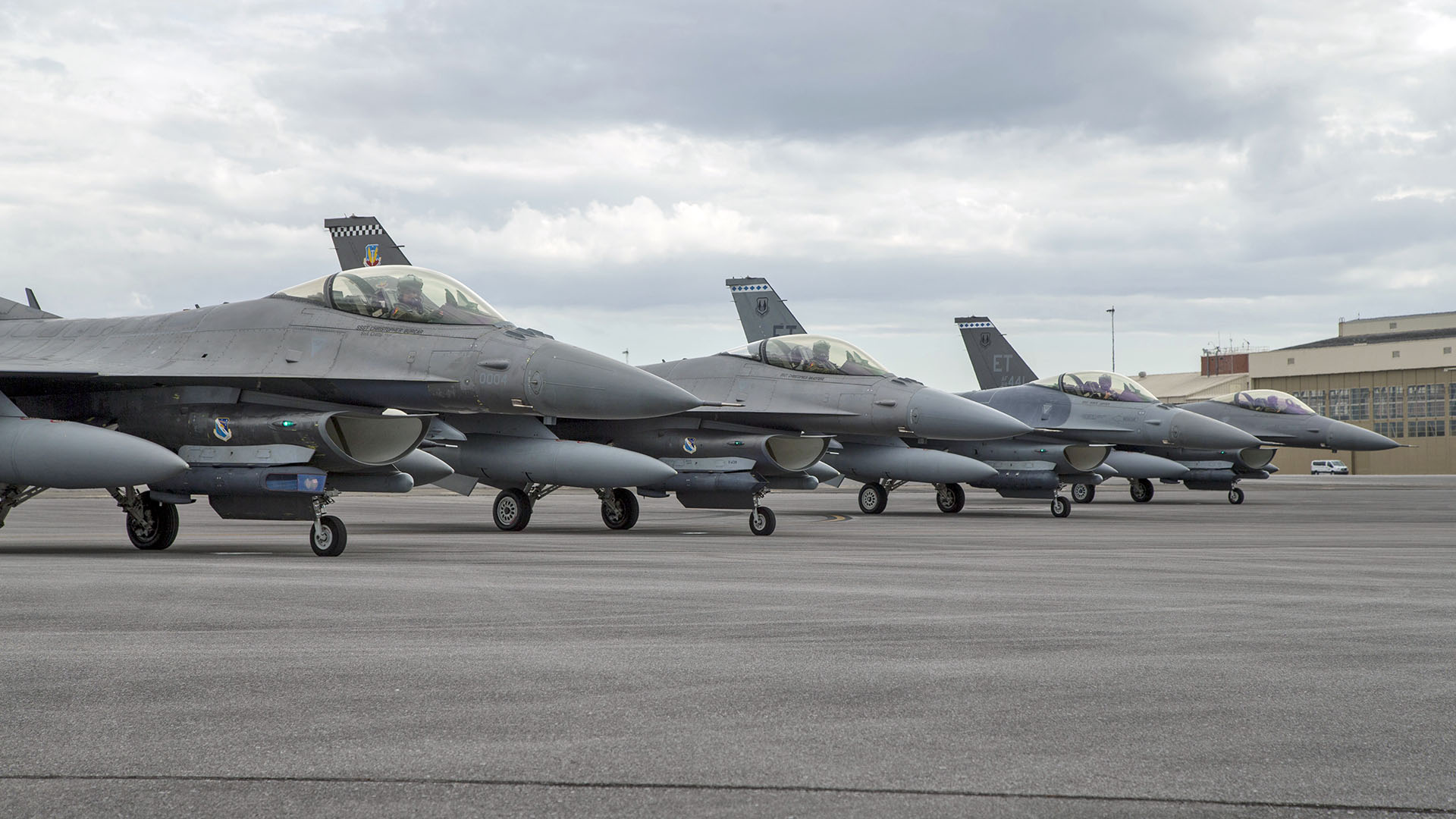
“The Air National Guard has already received this new capability to a certain degree and is already flying it. So, the significance of the most recent flight is that fielding of this capability has been quite a unique experience for the 53rd Wing. The initial task was basic integration of a new capability in the F-16 [for the] Air National Guard units that are protecting our nation from a homeland defense perspective, as quickly as possible,” the major continued. “Now the 53rd Wing has accomplished that task, which is to get capability to the warfighter as quickly as possible, the task is how can we further develop this radar and truly stress the capabilities that we can integrate it into our tactics, techniques, and procedures [TTPs], our three-dash-one [tactics manual],” added Maj Viegas. “Once we have the Guard sufficiently stocked with this capability, the Air Force is going to pivot and start fielding this to active-duty units.”
“The ANG has got it fielded as we are doing testing. The 53rd Wing is passing information to them so they can work effectively with the new capabilities as well as creating our recommendations and TTPs for when the active-duty starts getting the radar,” added Air Force Captain Michael “Echo” Arnold, the AN/APG-83 Tactics Investigation Unit Project Officer for the 85th TES.
While the Nellis element of the 53rd Wing team will start work with upgraded AESA-equipped F-16s this Fall, the current work lies with the Operational Flight Program Combined Test Force (OFP CTF), a combined effort between the 40th Flight Test Squadron (FLTS) and the 85th TES, at Eglin. The same team will take a similarly efficient combined approach when the new F-15EX arrives there next year for initial test work.
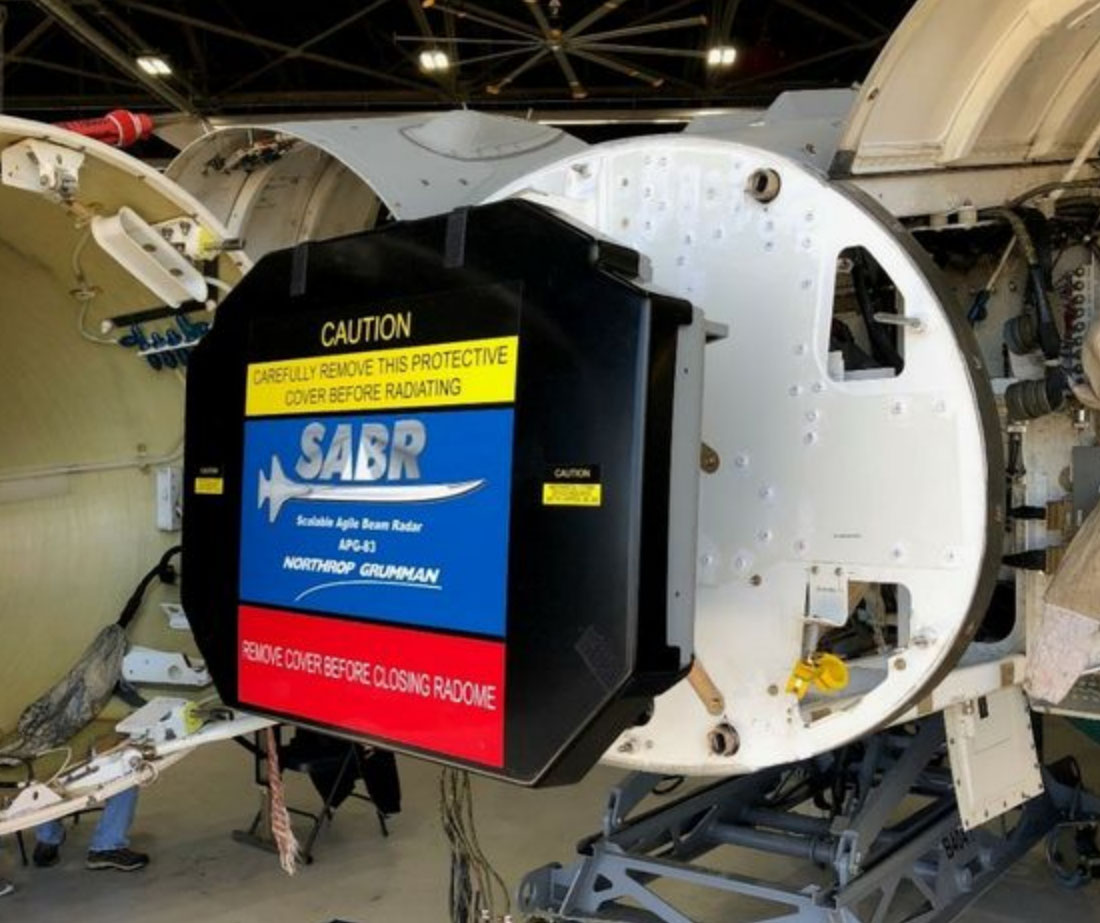
In January 2020, Northrop Grumman said the USAF completed the first installation of the AN/APG-83 radar on ANG F-16s at Joint Base Andrews, Maryland, to meet a U.S. Northern Command Joint Emergent Operational Need (JEON) for homeland defense.
This followed a June 17, 2017, announcement from the USAF that it had selected the AN/APG-83 to upgrade 72 F-16s to meet the JEON. In addition, the USAF plans to retain 350 Block 40/42/50/52 F-16C/Ds in service through at least 2048 and it is putting them through a service-life extension program (SLEP), plus adding new avionics, including the AESA radar.
The new radar enables the F-16 to detect and track targets at greater ranges and with increased precision, especially low flying targets with small radar cross-sections. Cruise missile defense was one of the driving factors in equipping the Guard Vipers that stand watch over Washington, D.C. with the radars. AESA are also more reliable than their mechanically scanned forebearers and they are capable of enhanced air-to-ground mapping.
“This [enhanced air-to-ground mapping] capability allows us to target the northwest corner of a small building or the cockpit of an aircraft [on the ground at an enemy airfield] from several miles away, beyond line-of-sight [beyond visual range],” Jack Harman, a 40th Flight Test Squadron government civilian F-16 test pilot, was quoted by the USAF as saying. “[The radar] improves our ability to identify the threat prior to us being targeted. We no longer have to be inside a threat envelope in order to detect it.”
Upgrading the existing F-16 radars with the new AESA is a major capability jump for the USAF F-16 community, and it also enables greater collaboration in the fighter integration effort with 5th generation assets. “That new hardware and software [in the AESA] is how we’re leveraging lessons learned from the F-22 and F-35 […] and funneling all those lessons into what we are developing in the F-16,” said Major Viegas.
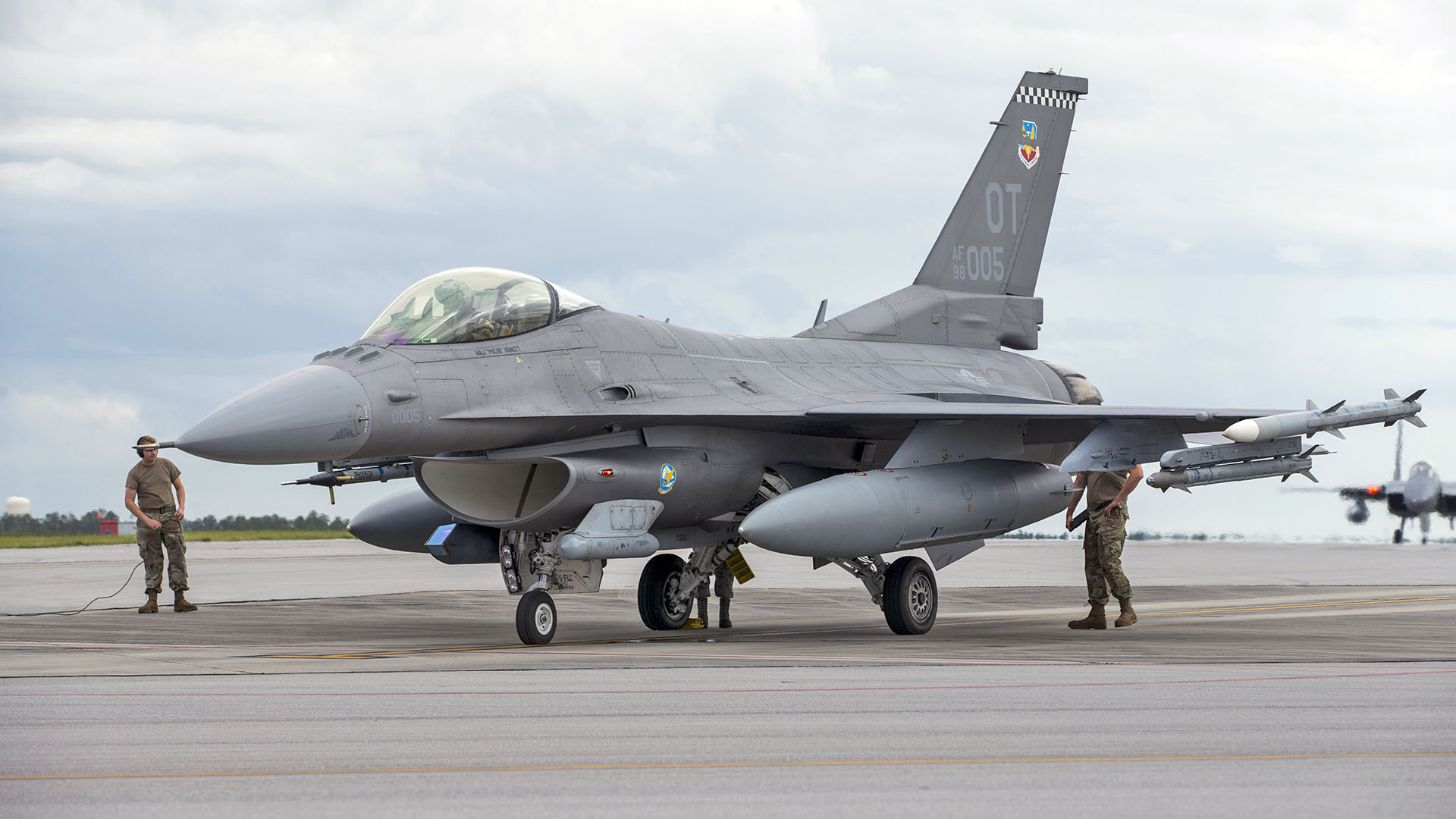
Viegas says the team of F-16 test units will work through all mission sets and assess if the AESA changes any aspects of those and see how the fighter integrates with all types of other aircraft too. “We will be bringing APG-83-equipped aircraft from Eglin out here to [Nellis to] participate in those Large Force Test Events,” he adds, saying that all of the work will then be integrated into the USAF Weapons School course.
The new AESA upgrade is a critical part of keeping USAF F-16s credible for the remainder of their service lives. It also brings the F-16 into step with the Air Force’s other front line fighters with a radar technology that has become a benchmark in capability across the international fighter aircraft community.
Contact the author: jamie@thedrive.com
